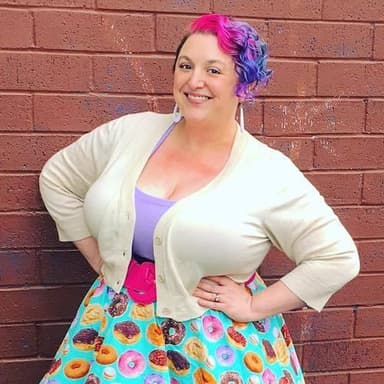How Marketers Can Approach the Growing Conscious Consumption Movement
Published on December 12, 2016/Last edited on December 12, 2016/7 min read


Team Braze
Healthy marketing often involves finding a way to meet customers where they’re at, in their respective worlds, in ways that might not be directly aligned with how you’ve been thinking about your brand or product. What does the customer think about? What troubles them? Where do they devote energy and thought and time? And is there room in those worlds, wherever they are, for you?
One topic that’s become decidedly mainstream is “green” living. To take that trend deeper, consumers are becoming ever more focused on conscious consumption. The average consumer, more than ever, tends to prefer a brand that aligns with their own values, and more and more, personal values tend to align with global consciousness in many forms.
In this time of upheaval, as political unrest and global crises of all varieties abound and even dominate, how can companies become truly, authentically conscious to match the rising consciousness of their customers? Marketing to conscious customers matters because, chances are, they’re your customers. Understand them first. Then create messages with the best impact to build those real relationships we’re always talking about.
What is conscious consumption?
If you’re not already plugged into the world of conscious consumption, it could be a surprise to learn how some folks choose to live. The norm on one side of buying, say, laundry detergent or clothing is based on price, convenience, and general preference. The choices made are based in preferences so familiar, they’re simply second nature.
The conscious consumer, however, will interrupt their own purchase process with loads of questions, and probably some research. The final decision to buy will be based on a host of determining factors.
In the case of laundry detergent, the conscious consumer will want to know what the ingredients are. Will they biodegrade? What happens when the residue soap hits the water table? What will be the impact on local wildlife or estuaries or reefs? Will pharmaceutical ingredients leach back into water that someone, somewhere might want to drink? In the case of clothing, a conscious consumer will wonder where and how the clothing was manufactured. An ethically driven consumer might focus on the quality of the lives of the people involved in manufacturing the goods, or where the supplies were sourced, or how workers are paid or treated along the way. A conscious consumer will wonder about parent companies, their reputations in the global marketplace, and whether they give as much as they take.
What does it take to become a conscious company with conscious marketing?
We all know buzzwords like “green” and “sustainable” and “fair trade,” each of which come with their own challenges and pitfalls. The truly conscious consumer will take their curiosities and concerns far deeper than these surface-level catchphrases. As more and more people become “conscious” about how they shop, use, and buy, standards for sustainability also deepen and become richer and more complex.
A company that truly wants to exist in the sustainability and ethical space can no longer toss the consumer a half-hearted bone. It’s no longer just about whether your packaging is made from 25% recycled material, or whether you earmark a tiny slice of your annual revenue for donation to a nonprofit.
The company that wants to exist and market consciously to conscious consumers must look at every level of their organization, and make certain that all living things touched by the organization are treated well at every stage of the company process, and beyond.
Companies to look to for inspiration
Buycott
Some products and services exist for the sole purpose of driving awareness and supporting ethical consumption. One such example is an app called Buycott that sprung up not long after Occupy Wall Street began its thing. It enables users to scan any product with a UPC code to discover the origins of a brand. It tells people who owns the company (who owns the company, who owns the company) of the product they’re interested in.
Not everyone’s purpose can be quite so plugged in, but any retail brand (or wholesale brand, for that matter) could partner with a brand like Buycott, or develop a portion of their own product or service to align with similar values. Giving consumers more information about the products you offer, and their origins, offers the customer a very real service as they move through your world.
Grubhub
Just after the 2016 election, Grubhub CEO Matt Maloney did what few CEOs ever do. He outright declared his disdain for the election results in an in-office memo. His missive was met with mixed results, publicly.
Many lauded his choice, including Ara Katz, cofounder and prior CMO of the Spring shopping app, who wrote on Instagram:
“Dear brands (and anyone with an audience), if you drop the word ‘authenticity’ in your marketing meetings like it’s going out of style, let GrubHub CEO Matt Maloney be an example of what the word really means. Brands are shared belief systems and just a bunch of people sitting around conference rooms making decisions about what to put out in the world. So why not stand for something…building audiences on social media is a responsibility—thought leadership has accountability. How do you want to use it?”
Of course, not everyone agreed. The Chicago Tribune, among other publications, criticized his boldness. They referred to Maloney as having “tripped over his own words,” and used the term “grubhub hubbub.” Wink!
Whatever your opinion on the election, Maloney can be appreciated for making a daring choice. He was unafraid to publicly align his company with his personal values, at the risk of losing customers and stock share. A decision like this one, so feared and avoided at every level of most organizations, exemplifies embodying consciousness at an organizational level. To be clear, the consciousness might not be in which candidate a public individual or organization prefers. It’s in the willingness to be public about it—to align corporate identity with personal values, whatever they may be, despite the risk of having an impact on dollars and cents.
Ben & Jerry’s
The lovable ice cream guys want to be known as a “social justice company” that sells ice cream. They have ethical values at the very core of who they are, and it’s clear to anyone who’s ever enjoyed a pint of Hazed & Confused that their bottom line hasn’t suffered from declaring their heart-centered values for all the world to see, both in their marketing and in their brand personality. They’ve considered the ramifications of how they interact with their community and the greater world at every stage of their supply and manufacturing process, and well beyond. The reality is, they probably don’t have to do this. We’d eat their ice cream anyway. But they were way ahead of the curve on the corporate ethics train, and any brand, digital or otherwise, could learn from these pioneers of conscious marketing.
Final thoughts
In closing, there’s one important caution we’d like to offer. Namely: it’s probably not enough to throw money at the problem.
Many green-thinking publications have lauded companies, for example, who favor one-for-one systems. For each thing you buy, some needy person somewhere else also gets one of the same for free. It’s all well and good to build benevolence into your business model. Some charity is better than no charity, just as Fair Trade—despite all its problems and failures to deliver—is better than having no alignment with Fair Trade ideals.
That said, changing only one thing about your businesses practices, especially where that one thing is diverting a bit of resources to those less fortunate, isn’t enough. It doesn’t speak to the root of the problems that require we become more conscious in the first place. Instead, think of your entire business or production process and how changes at every level can have an impact.
Be Absolutely Engaging.™
Sign up for regular updates from Braze.
Related Content
View the Blog
Look out: Outlook's new email requirements and what they mean for Braze senders

Alison Gootee

How the Braze Data Platform enhances flexibility and fosters collaboration

Sahiz Kaur

Customer churn prediction: Using data for smarter retention
